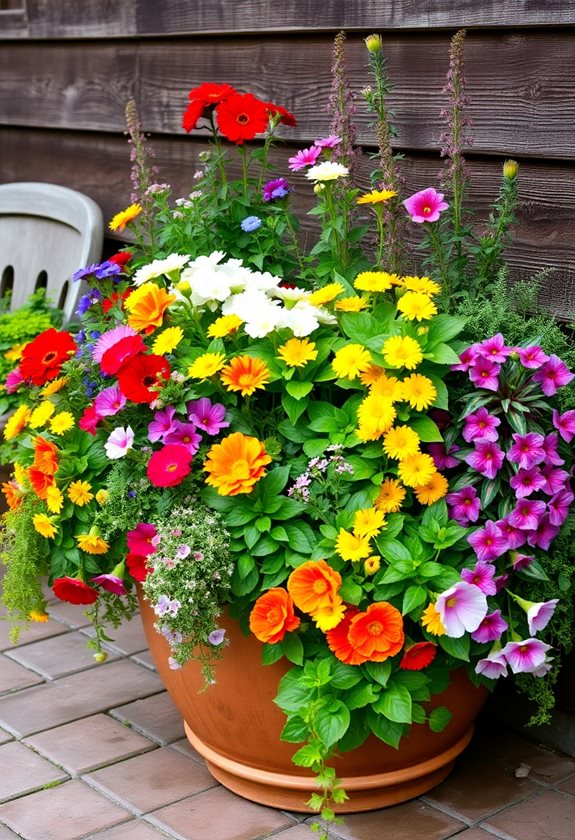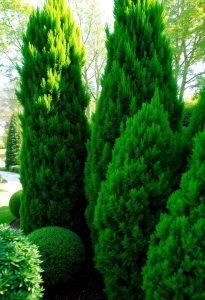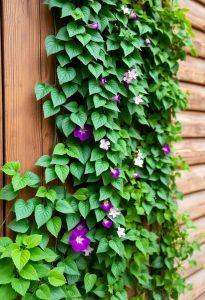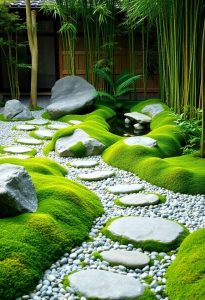To achieve lush container gardens, start by picking the right pots—choose breathable terra cotta or durable plastic with drainage holes! Next, select plants that fit your sunlight and care needs; mix heights and colors to keep it interesting. Use good potting soil, water less often but deeply, and fertilize wisely. Don’t forget to monitor your plants for signs of stress! Want to know the secrets to seasonal maintenance? There’s more to explore!
Design Highlights
- Choose breathable containers like terra cotta with drainage holes to prevent waterlogging and promote healthy root growth.
- Select a variety of plants with different heights, textures, and colors to create visually appealing arrangements.
- Use high-quality potting mix with added perlite for improved aeration and moisture retention in your containers.
- Water deeply and less frequently, checking soil moisture levels to ensure plants receive adequate hydration without sogginess.
- Fertilize with balanced, slow-release options and supplement periodically to provide essential nutrients without risking root burn.
Choosing the Right Containers
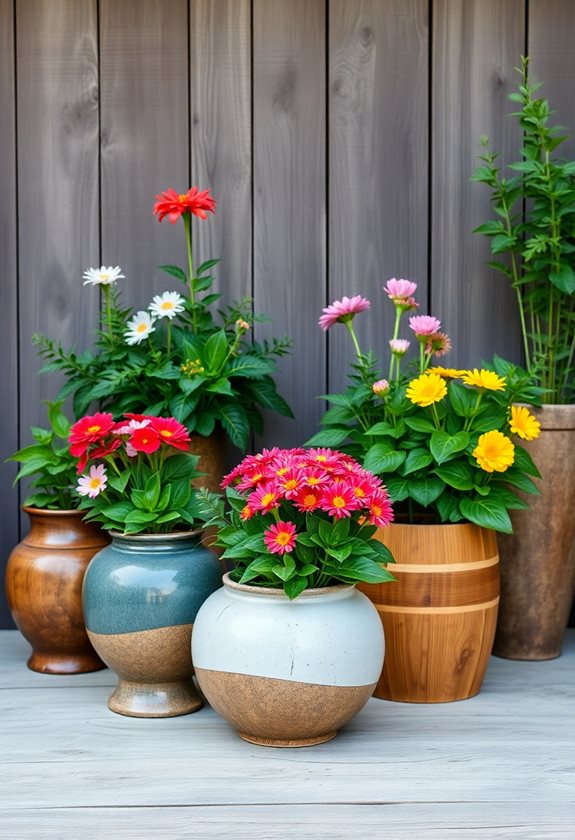
When it comes to container gardening, picking the right containers can feel a bit like choosing the perfect outfit for a first date—you want something that looks good but also fits just right! Consider materials like terra cotta, which breathes well, or plastic, which is lightweight and durable. Make sure your containers have drainage holes; nobody wants their plants to drown! Choose sizes based on your plants’ needs—big for deep roots, small for compact growth. And don’t forget color! Bright hues can liven up your space. Additionally, consider the material durability of your containers to ensure they last through varying weather conditions. So, what’s your style? Happy gardening! Let your creativity bloom!
Selecting the Perfect Plants
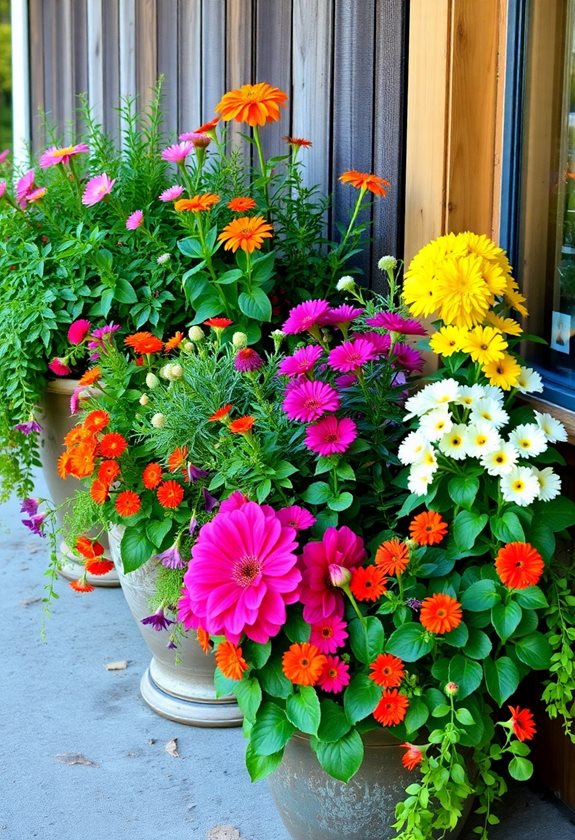
How do you choose the perfect plants for your container garden? Start by considering sunlight and climate—some plants thrive in full sun, while others prefer shade. Mix textures and colors for visual excitement! Think about height; taller plants can serve as a stunning backdrop.
Here are some great combos:
- Thrillers: Tall, dramatic plants like canna lilies.
- Fillers: Medium-sized beauties like petunias.
- Spillers: Trailing plants such as ivy.
Don’t forget to choose plants with similar water and nutrient needs—nobody wants a diva in the mix! Additionally, consider the right plant selection to ensure your container garden flourishes throughout the seasons. Trust me, your container garden will thank you!
Understanding Soil and Drainage
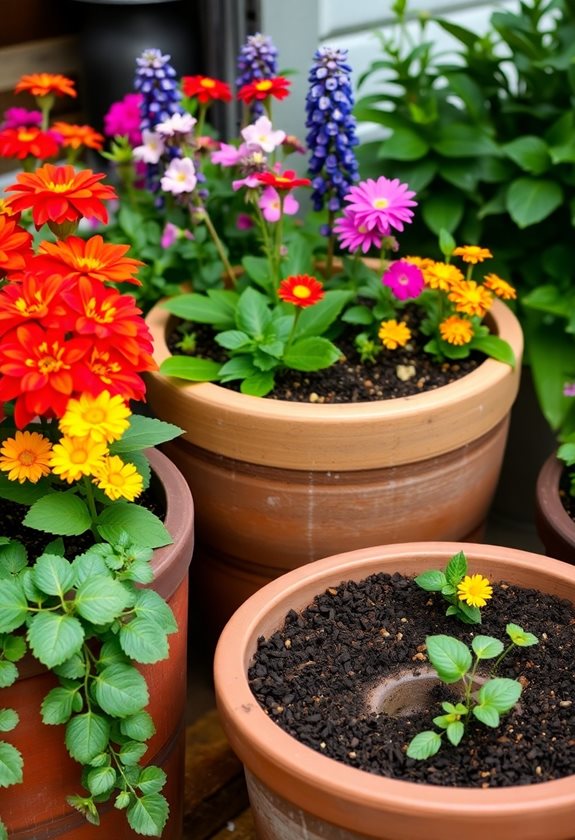
While it might seem like just dirt, understanding soil and drainage is key to a thriving container garden. You want your plants to flourish, right? Start with high-quality potting mix—it’s designed to retain moisture while allowing excess water to escape. Good drainage is essential, so make sure your containers have holes at the bottom. Consider adding materials like perlite or vermiculite to improve aeration. Trust me, I’ve learned the hard way that soggy roots lead to sad plants! If your soil’s a mess, your garden will be, too. Additionally, using self-watering containers can help maintain consistent moisture levels for your plants. Ready to dig in? Let’s create something beautiful together!
Watering Techniques for Success
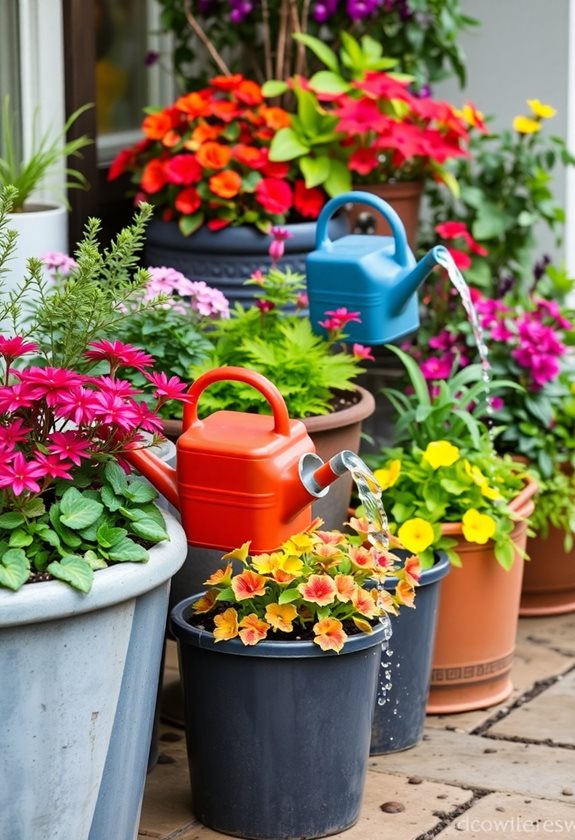
You’ve got your soil and drainage sorted, so now it’s time to tackle one of the most essential aspects of container gardening: watering. Proper watering can make or break your plants, so let’s explore effective techniques:
- Water deeply and less frequently to encourage root growth.
- Check moisture levels by sticking your finger an inch into the soil—if it’s dry, it’s time to water!
- Use a watering can with a spout for precision.
- Consider self-watering containers to ease your routine. Additionally, using best soil for container gardening is crucial for retaining moisture and providing essential nutrients to your plants.
Fertilizing Your Container Garden
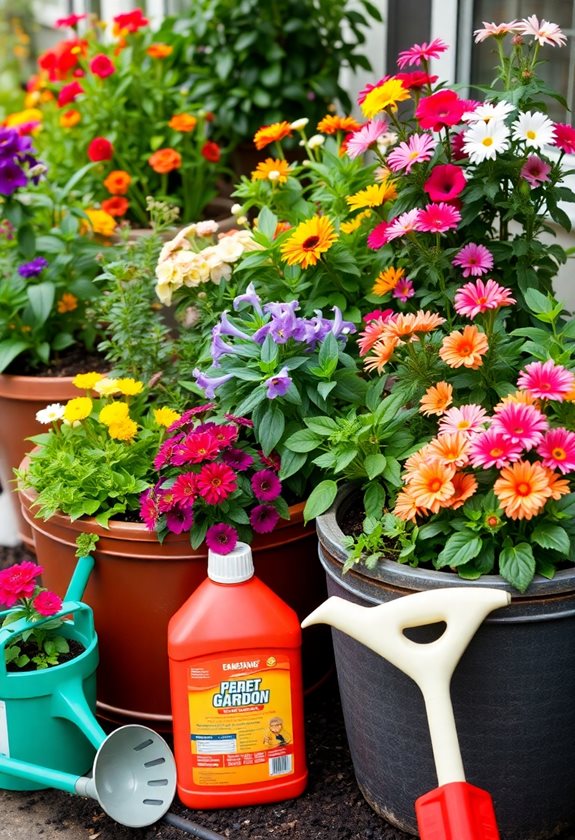
Fertilizing your container garden can feel a bit like trying to cook a gourmet meal without a recipe—exciting, yet a little intimidating! But don’t worry; you’ve got this! Start with a balanced, slow-release fertilizer, mixing it into your potting mix when planting. You can also supplement with liquid fertilizers every few weeks. Just remember, less is often more; over-fertilizing can burn those precious roots! Consider using organic options like compost or fish emulsion for a nutrient boost. Have you noticed yellowing leaves? That’s your plant’s way of saying, “Feed me!” So, roll up your sleeves and show your plants some love! Utilizing eco-friendly garden planters can also enhance the sustainability and health of your container garden.
Seasonal Maintenance Tips
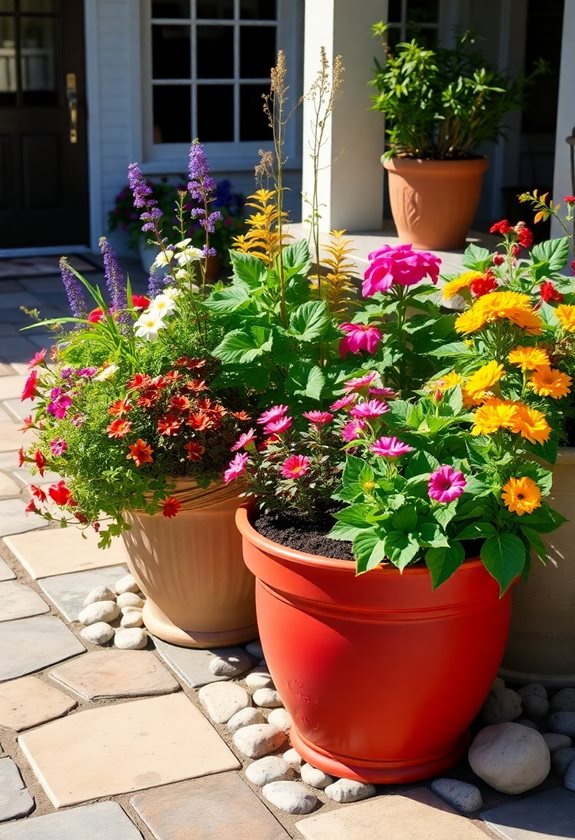
As the seasons change, so does the rhythm of your container garden, and keeping up with seasonal maintenance can make all the difference in your plants’ health and happiness! Here are some essential tips to master:
- Spring: Refresh your potting mix and add fertilizer to kickstart growth.
- Summer: Keep an eye on watering—containers dry out faster in heat!
- Fall: Trim back spent blooms and prepare your plants for cooler temps.
- Winter: Move containers to sheltered spots and protect roots from freezing.
Additionally, consider using raised garden beds which can enhance your growing experience by improving soil quality and drainage.
With these simple steps, your container garden will thrive through every season! Isn’t that exciting?
Frequently Asked Questions
Can I Use Recycled Materials for Containers?
Absolutely, you can use recycled materials for containers! Think about old buckets, wooden crates, or even wine bottles. Just make sure they have drainage holes, so your plants don’t drown. It’s a fun way to add personality to your garden while being eco-friendly! Plus, you’ll save money. Have you ever used a quirky container? It’s a conversation starter for sure! So go ahead, get creative, and let your garden thrive!
How Do I Protect Containers From Extreme Weather?
To protect your containers from extreme weather, you’ve got a few tricks up your sleeve! Move them to sheltered spots during storms or heatwaves. Use insulating materials like bubble wrap or burlap for extra warmth in winter. You can also elevate pots off cold surfaces to prevent freezing. And don’t forget to water your plants well before a heatwave; it helps them withstand the heat! Isn’t gardening all about adapting and learning? You’ve got this!
What Are Companion Plants for Container Gardening?
Ever wondered how a little teamwork can transform your container garden? Companion plants can work wonders! Try pairing basil with tomatoes; they enhance each other’s growth and flavor. Marigolds, with their pest-repelling properties, love hanging out near almost anything! Don’t forget about lettuce and radishes; they thrive together, maximizing your space. So, why not experiment and find your perfect plant pals? Your garden will thank you with vibrant growth and bountiful harvests!
How Can I Attract Pollinators to My Container Garden?
To attract pollinators to your container garden, start with colorful flowers like sunflowers or lavender that bees and butterflies adore! You can mix in herbs like basil and mint; they’re not only useful but also fragrant! Remember, a splash of water in a shallow dish can provide a invigorating drink for these busy insects. Have you noticed how much they brighten your garden? Creating a welcoming space for them makes gardening even more rewarding!
Can I Grow Vegetables in Small Containers?
Absolutely, you can grow vegetables in small containers! Think about tomatoes, peppers, or even salad greens. Just remember to choose the right size—5-gallon buckets work wonders for larger plants, while smaller pots suit herbs perfectly. Make sure your containers have drainage holes, and use quality potting mix. Water regularly, and don’t forget to fertilize. Have you ever tasted a homegrown tomato? It’s a game-changer! Enjoy the process; you’ll love it!

